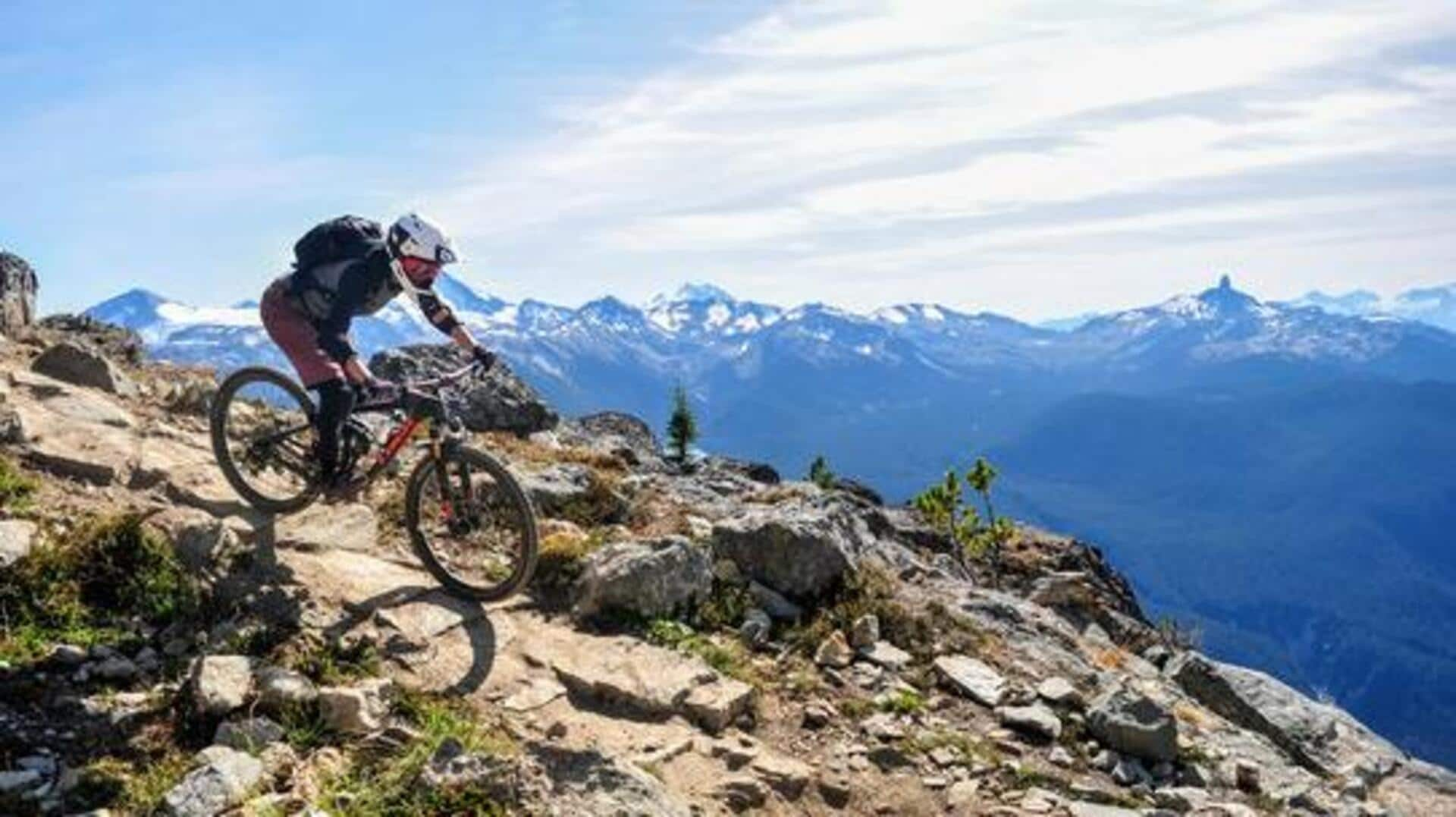
Mountain biking 101: Gear, safety, and more
What's the story
Mountain biking across ancient volcanic landscapes is a unique thrill for adventure seekers. These terrains, shaped by past eruptions, offer some challenging trails and breathtaking views. Riders can experience the rugged beauty of nature while navigating through diverse paths that test their skills and endurance. The combination of natural history and physical challenge makes these landscapes an exciting destination for mountain biking enthusiasts looking to explore new horizons.
Trail exploration
Discovering volcanic trails
Volcanic landscapes provide a range of trails for various skill levels. From beginner-friendly paths to advanced routes with steep inclines, you can pick according to your expertise. These trails generally have rocky surfaces, loose gravel, and sudden drops, ensuring a thrilling ride. Riding through these paths, you can witness unique geological formations and the raw beauty of untouched nature.
Safety gear
Essential gear for safety
Safety is the key when you are mountain biking in a volcanic area, considering the unpredictable terrain. Riders should gear up with helmets, gloves, knees, and elbow guards to protect themselves from falling or accidents. A sturdy bike with a good suspension is also important to navigate rough surfaces. Carrying a first-aid kit makes you prepared in case of minor injuries on the ride.
Weather awareness
Understanding weather conditions
Weather conditions can make or break your biking experience on volcanic terrains. It is imperative to check forecasts before heading out, as rain can make trails slippery and dangerous. Windy conditions might make it hard to maintain balance on narrow paths or ridges. Staying abreast of weather patterns helps riders plan their trips better, and ensures they are prepared for any eventuality during their adventure.
Eco-friendly practices
Tips for sustainable riding
Practicing sustainability while mountain biking goes a long way in preserving these ancient landscapes for future generations. Riders should stick to designated trails to avoid damaging vegetation or disturbing wildlife habitats. Carrying reusable water bottles also helps reduce plastic waste along the routes. Not to mention, respecting local guidelines ensures minimal impact on these fragile ecosystems while you enjoy an exhilarating ride through nature's wonders.